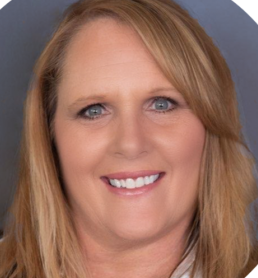The Bumpy Ride of Interoperability and Electronic Prior Authorization | AMCP Nexus 2022
There is a crescendo of policies and programs for healthcare interoperability and electronic prior authorization, but it is a complicated proposition, says Kim Boyd at AMCP Nexus 2022.
No one seems to disagree that data ought to flow more freely through the U.S. healthcare system and that processes like prior authorization should happen faster and be more automated
But in a session today at the AMCP Nexus 2022 meeting, Kim Boyd sketched a complex picture development of technology standards and statutory and regulatory history.
Kim Boyd

“The path to interoperability and specifically to PA (prior authorization) improvement and automation, data and cost transparency is one that has lots of curves, speedbumps— and a lot of roadblocks,” said Boyd, who is senior consultant, regulatory resource center lead for Point-of-Care Partners, a healthcare IT management consulting company in Hollywood, Florida.
But Boyd also spoke about a “crescendo of polices and standards” to improve interoperability — the ability of different healthcare IT systems and devices to communicate with each other — and patient empowerment.
Boyd traced the legislative and regulatory history of interoperability and electronic prior authorization back to the 21st Century Cures Act. Federal action went into something of a lull during the height of the COVID-19 pandemic, Boyd said, so many states have stepped in with laws or rules concerning data-sharing.
Boyd also described the prominent role of the standards development organizations,such Health Level 7, which developed the Fast Healthcare Interoperability Resources (FHIR) standard — referred to almost exclusively by its acronym, FHIR (pronounced fire). She also mentioned the National Council for Prescription Drug Programs and X12.
Boyd noted the growing role of specialty medication in healthcare and the difficulties it poses for streamlining and automation.
“Specialty pharmacy today has no clear or consistent entry point to automation,” Boyd said. “The current state of specialty prescribing drives us to use portals, web searches, cheat sheets and binders.”
Addressing the Challenges of AI is Imperative | AMCP Nexus 2024
October 22nd 2024There is a need for strict policies regarding the use of AI in the managed care space, according to Douglas S. Burgoyne, Pharm.D., MBA, FAMCP, adjunct associate professor at the University of Utah College of Pharmacy.
Read More
AI Benefits PBMs, Health Plans and Formulary Decision Making | AMCP Nexus 2024
October 21st 2024Health plans and PBMs are using AI to aggregate data, summarize information and enhance their formulary decision-making processes, according to Douglas S. Burgoyne, Pharm.D., MBA, FAMCP, adjunct associate professor at the University of Utah College of Pharmacy.
Read More
Technology can help address the complexities of specialty medications by automating processes and enabling proactive interventions to ensure patients stay on their critical therapies, according to Kristen Whelchel, Pharm.D., CSP, Research and Patient Care Improvement Pharmacist with Vanderbilt Specialty Pharmacy's Department of Health Outcomes and Research.
Read More
How Technology Benefits Specialty Pharmacy | AMCP 2024
October 18th 2024Kristen Whelchel, Pharm.D., CSP, Research and Patient Care Improvement Pharmacist with Vanderbilt Specialty Pharmacy's Department of Health Outcomes and Research, explains how technology identifies at-risk patients, coordinates medication refills and more.
Read More
Cancer’s Reign Over the Drug Development Pipeline Continues| AMCP Nexus 2024
October 18th 2024The FDA has already made more than a dozen cancer drug approval decisions this year and more expected in the next several months and in early 2025, according to Kaelyn Boss, who gave an oncology drug pipeline talk at the 2024 AMCP Nexus meeting this week.
Read More
Addressing the Challenges of AI is Imperative | AMCP Nexus 2024
October 22nd 2024There is a need for strict policies regarding the use of AI in the managed care space, according to Douglas S. Burgoyne, Pharm.D., MBA, FAMCP, adjunct associate professor at the University of Utah College of Pharmacy.
Read More
AI Benefits PBMs, Health Plans and Formulary Decision Making | AMCP Nexus 2024
October 21st 2024Health plans and PBMs are using AI to aggregate data, summarize information and enhance their formulary decision-making processes, according to Douglas S. Burgoyne, Pharm.D., MBA, FAMCP, adjunct associate professor at the University of Utah College of Pharmacy.
Read More
Technology can help address the complexities of specialty medications by automating processes and enabling proactive interventions to ensure patients stay on their critical therapies, according to Kristen Whelchel, Pharm.D., CSP, Research and Patient Care Improvement Pharmacist with Vanderbilt Specialty Pharmacy's Department of Health Outcomes and Research.
Read More
How Technology Benefits Specialty Pharmacy | AMCP 2024
October 18th 2024Kristen Whelchel, Pharm.D., CSP, Research and Patient Care Improvement Pharmacist with Vanderbilt Specialty Pharmacy's Department of Health Outcomes and Research, explains how technology identifies at-risk patients, coordinates medication refills and more.
Read More
Cancer’s Reign Over the Drug Development Pipeline Continues| AMCP Nexus 2024
October 18th 2024The FDA has already made more than a dozen cancer drug approval decisions this year and more expected in the next several months and in early 2025, according to Kaelyn Boss, who gave an oncology drug pipeline talk at the 2024 AMCP Nexus meeting this week.
Read More
2 Commerce Drive
Cranbury, NJ 08512
All rights reserved.